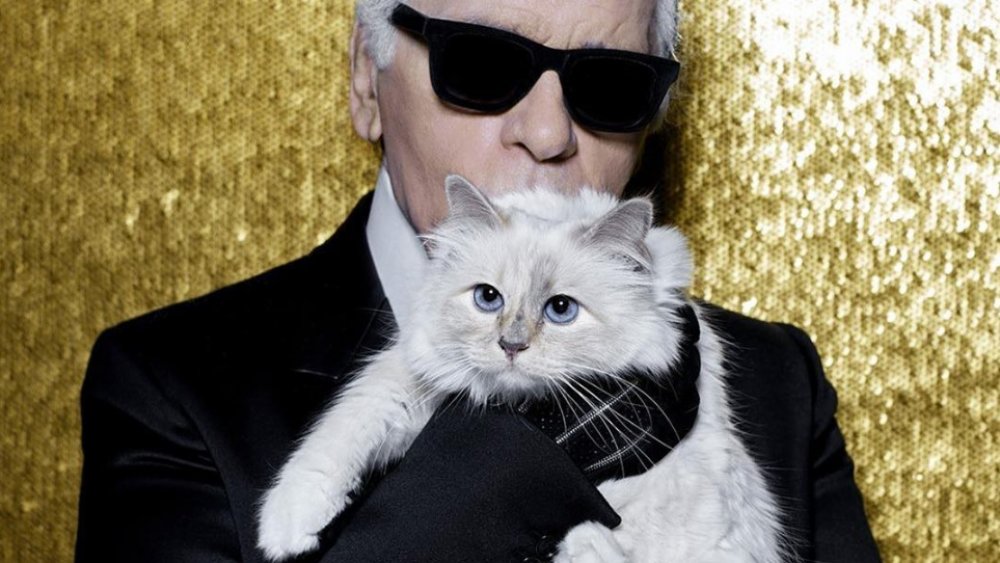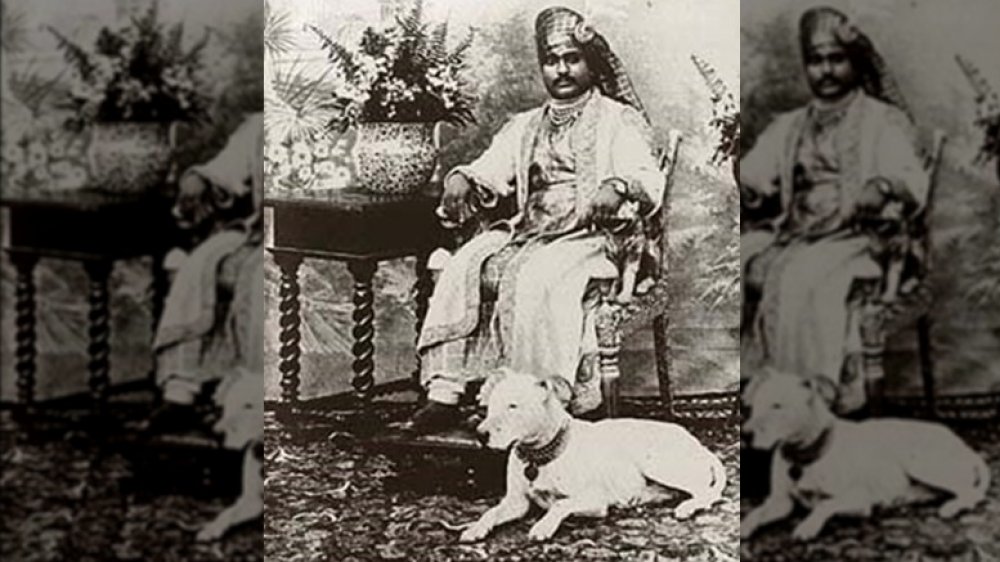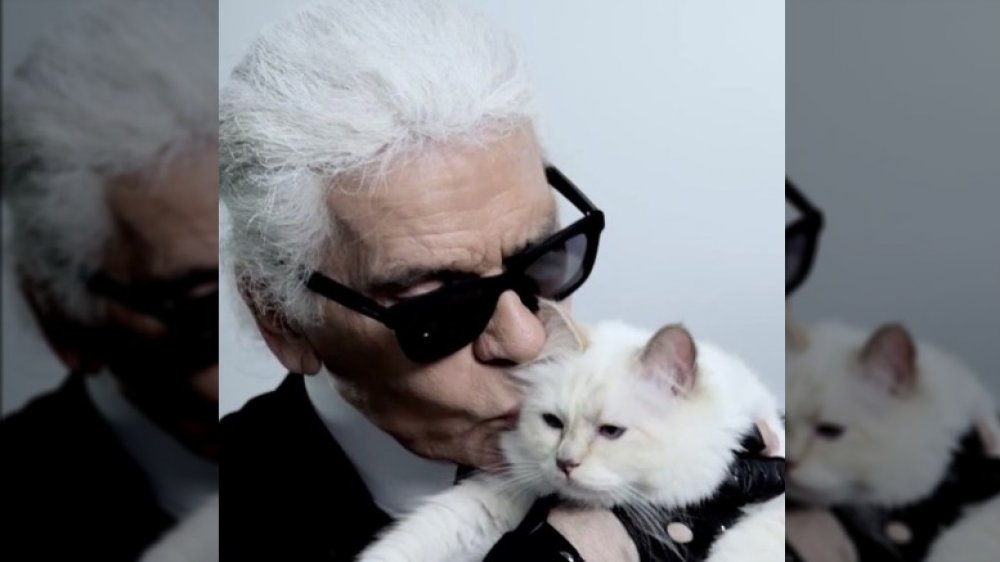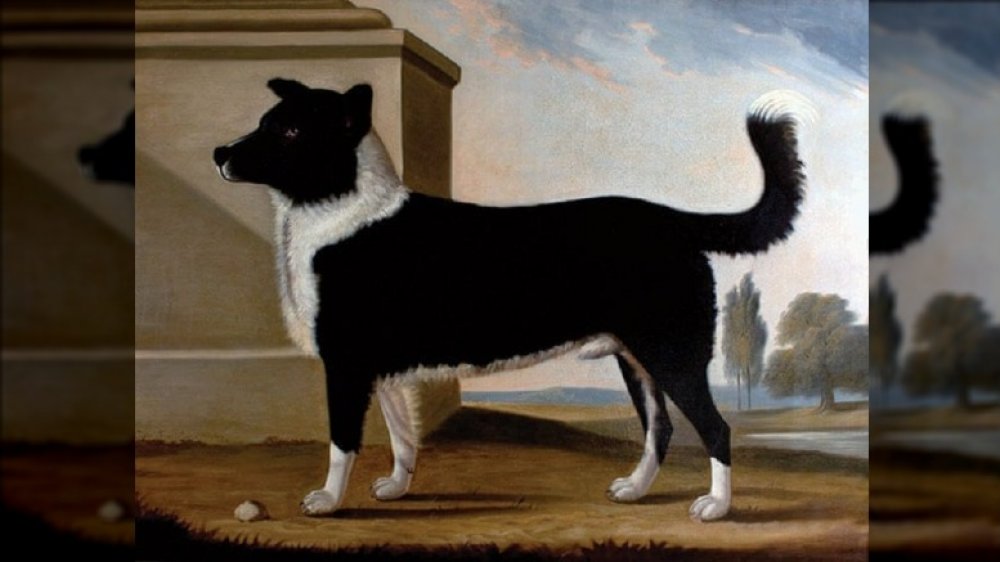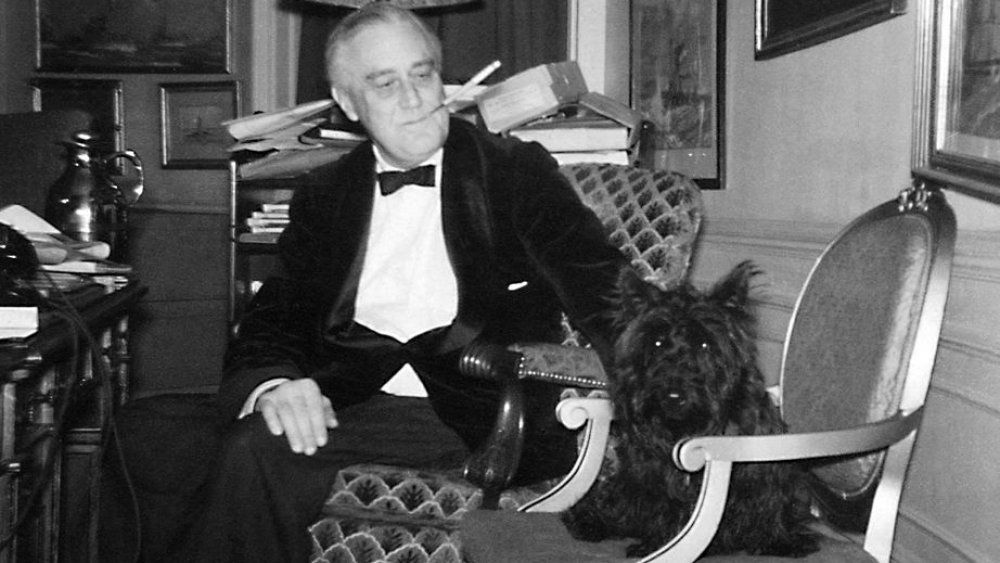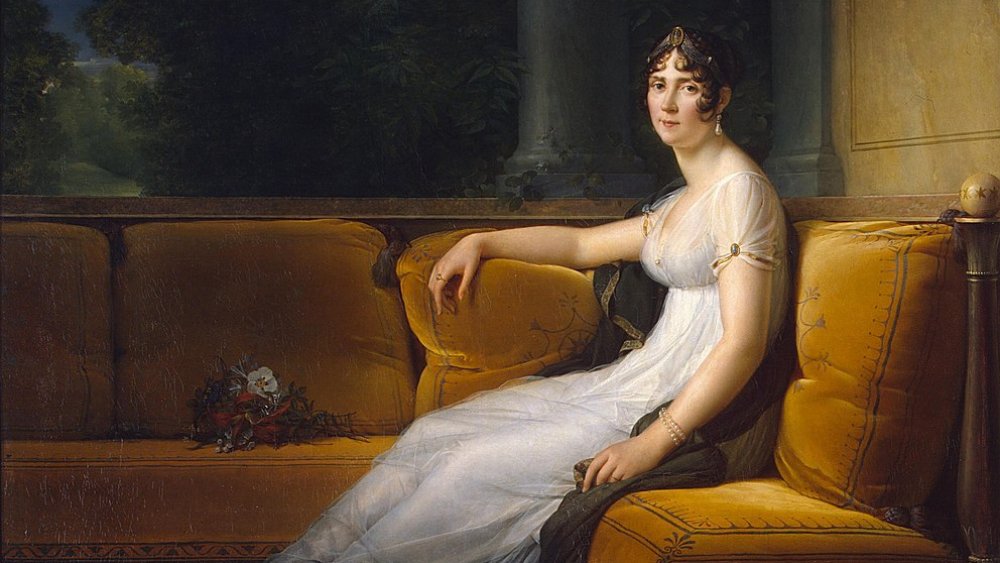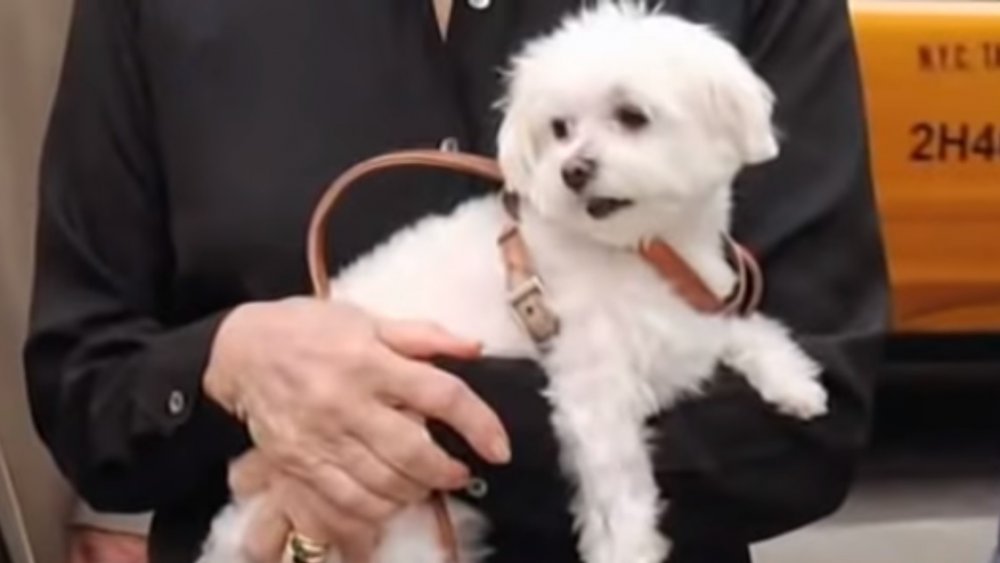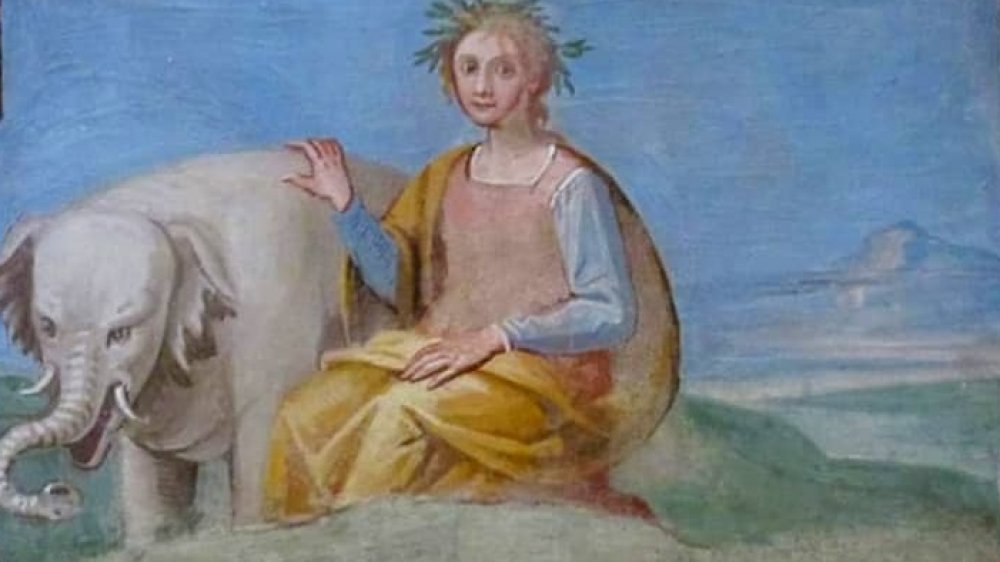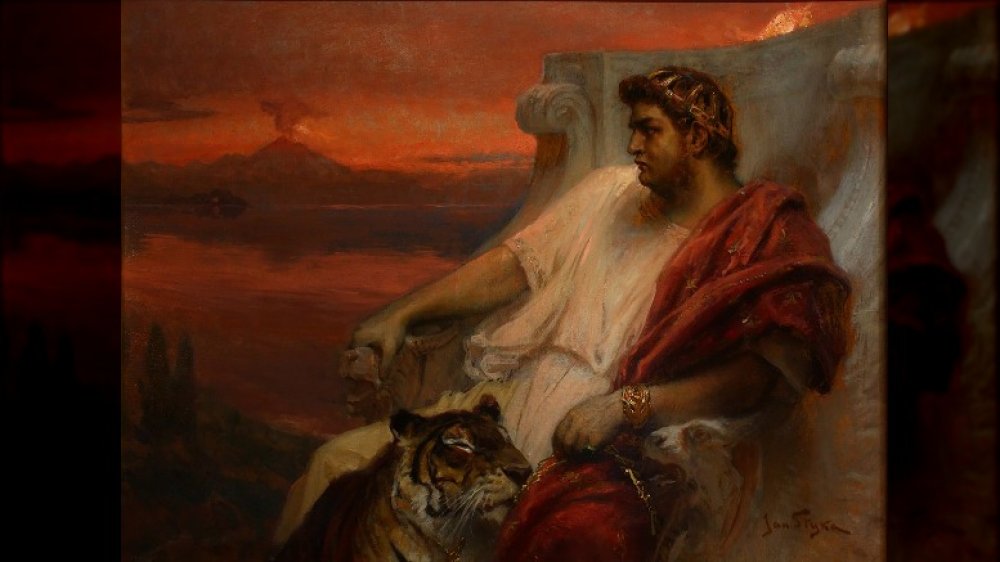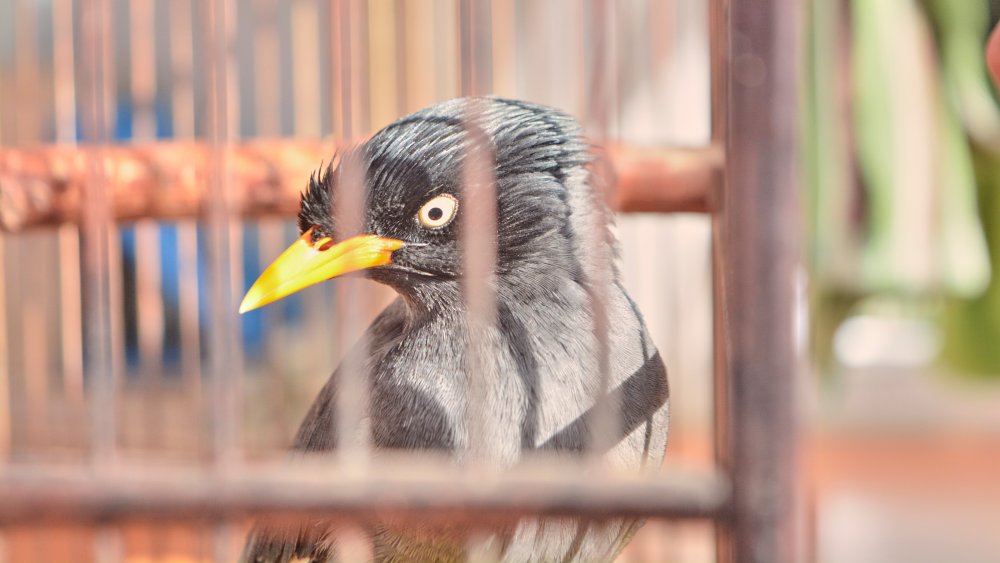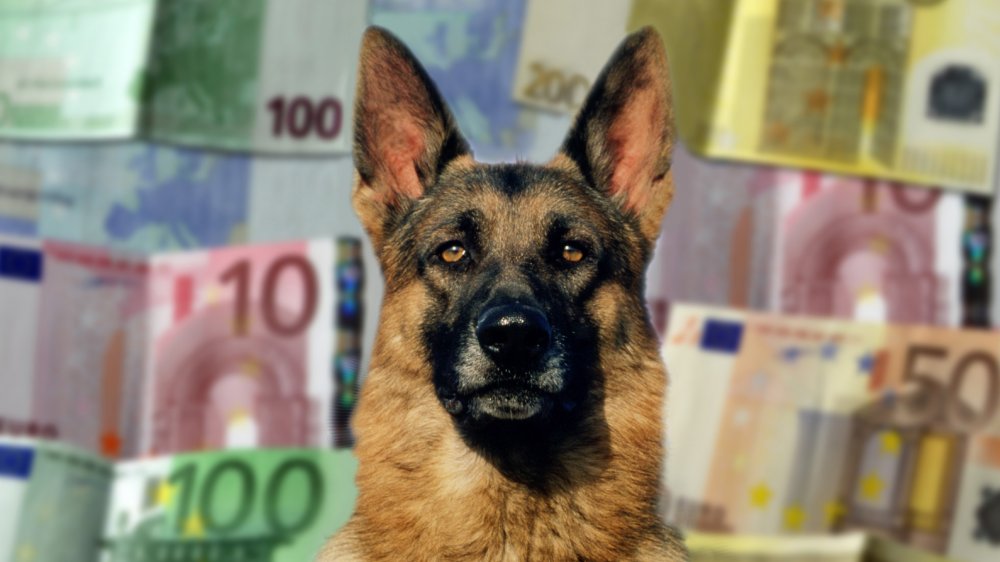The Most Pampered Pets In History
People absolutely adore their pets, and you can tell this by how light their wallets are. In 2018, Americans spent $72 billion on the non-human members of their families. Sure, some of that was for vital items like food, but a not insignificant amount was on things pets don't need at all, like nail polish and Christmas sweaters. And toys. So many toys.
But if you've ever had a pet, you get it. Pets are the best. So now imagine that money isn't an object. Imagine you have so much wealth and power you can do basically anything, and no one around you is going to point out it's super weird. Imagine how overboard you would go showing love to your precious pets.
Fortunately, you don't have to imagine because there are plenty of real-world examples already. Whether historical or modern, the rich and powerful are always spoiling their pets to truly absurd degrees. You'll definitely be jealous of the lives these animals led. These are the most pampered pets in history.
The maharaja of Junagadh's dogs lived lives of luxury
It's clear the maharaja of Junagadh (Muhammad Mahabat Khanji III) loved his dogs. What's not clear is just how many of those dogs he loved, but it definitely numbered into the hundreds. Having so many he couldn't possibly remember all their names didn't matter though, as he still managed to pamper them rotten.
According to The Tribune of India, each dog had its own room, complete with a personal servant and a telephone (which was more impressive in the early 1900s). They had a special hospital and veterinarian dedicated to their healthcare. When a dog went out for a drive in a rickshaw, it wore a "formal evening suit," and, reports Quartz India, a diamond collar. If the maharaja wanted to see one of his pets, they were carried to him on a palanquin. He had his favorites painted, and the portraits still hang in Junagadh Palace today. Roshanara, the maharaja's particular favorite, was married to another dog in an obscenely expensive three-day ceremony, one day of which was declared a national holiday. Royals and dignitaries attended the wedding and feast. Film cameras captured Roshanara, dressed in brocade and dripping in jewels. Of course, eventually, there are always those less than happy moments with dogs, and whenever they died, official state mourning was declared.
When India was divided in 1947, the maharaja had to flee. And naturally, he filled his plane with dogs and treasure, even leaving one of his children and a wife behind, instead filling their seats with two more dogs.
Karl Lagerfeld and his cat were soulmates
Karl Lagerfeld was one of the most famous fashion designers ever, but in his later years, he became almost equally famous for how much he loved his cat. According to The New York Times, Lagerfeld fell in love with Choupette when he cat-sat her for a friend, and he was so miserable when he had to give her back that the friend gifted her to Lagerfeld.
From that moment on, Choupette was a princess. She traveled on private planes (carried in a specially designed Louis Vuitton cat carrier), ate pâté out of silver bowls while sitting at the table, played with toys like an iPad, and had her own entourage, complete with two minders, a bodyguard, a doctor, a "beauty squad," and a chef. When Lagerfeld couldn't be with her, he instructed the minders to "take down, in little books, everything she did, from what she ate, to how she behaved, if she was tired, and if she wasn't sleeping," so he would always know how she was. In nine months, they filled 600 pages.
Lagerfeld used Choupette as his muse in photography and fashion and mentioned her in every interview. Soon, she was his most famous model, with glossy magazine spreads, hundreds of thousands of Instagram followers, and a book about her life. She made millions through her own businesses. But just in case that wasn't enough, Lagerfeld confirmed before he died that Choupette would be getting part of his fortune.
Lord Byron wanted to be with his dog forever
One of the hottest people in history, the poet Lord Byron was famously described as "mad, bad, and dangerous to know," but it seems that couldn't be further from the truth, at least if you happened to be his beloved dog Boatswain. According to The Guardian, the Newfoundland came into the poet's life in 1803, when Byron was 15-years-old.
Despite his many, many dalliances with those of a more human persuasion, Mental Floss describes Boatswain as "the love of Lord Byron's life." They were inseparable, running around and having fun together as a puppy and teenage boy. Byron liked to pretend to be drowning in a lake to see if Boatswain would try to rescue him, which the dog always did. Byron had a life-size portrait painted of his pet (pictured), and a friend even wrote a children's book starring the two.
Unfortunately, Boatswain was bitten by another dog and got rabies in 1808. Byron refused to abandon his love, even though he knew how dangerous a rabid dog could be. The poet stayed by Boatswain's side, caring for him with his bare hands. Byron built a large monument on his estate by the dog's grave, complete with a poem he composed to Boatswain's memory, calling him the "firmest friend" who possessed "all the virtues of man without his vices." When the poet wrote his will three years later, he asked to be buried next to Boatswain. But by the time Byron died, his house had been sold, so he didn't get his wish.
FDR's dog was one of the most pampered pets in White House history
President Franklin D. Roosevelt and Fala, his Scottish Terrier, were inseparable. According to the book VIPs: Very Important Pets, Fala attended one of FDR's inaugurations and accompanied him on inspections of defense plants, as well as to meetings with world leaders, including Winston Churchill. Roosevelt's Presidential Library records that Fala came on fishing trips and family holidays, and the president would drive the dog around in his car. FDR's refusal to be apart from Fala drove the Secret Service nuts, as they thought the presence of the adorable dog drew extra attention to the president.
The members of Congress weren't huge fans, either, once launching an inquiry based on a rumor that a naval destroyer had been used to transport Fala after he'd been accidentally left on an island. As if FDR would've ever accidentally left his friend anywhere. In response, the president gave a speech where he defended Fala's honor.
Fala slept at the foot of FDR's bed, and a bone was brought for him on the president's breakfast tray every morning. But others loved the dog almost as much. White House staff gave him so many treats that FDR had to tell them to stop because it was making Fala sick. Fala got so much mail from fans that he had his own secretary to answer all the letters. On top of all that, two different movies about his life were made in the 1940s. And when FDR died, Fala attended his beloved master's funeral, and he was eventually buried near him.
Empress Josephine's orangutan was a perfect lady
Napoleon's consort, the Empress Josephine, loved exotic animals. According to Ambition and Desire: The Dangerous Life of Josephine Bonaparte, in the early 1800s, ships constantly arrived in France with creatures not found anywhere else in Europe, including kangaroos, llamas, and zebras. Most of them lived in a zoo on Josephine's estate, but one animal was more like a member of the family. Her name was Rose, and she was an orangutan.
Named after Josephine's favorite flower, All About History says Rose was a gift from a general and the first orangutan to ever end up in France. As if to temper the shock of a never-before-seen ape wandering around her palace, Josephine made sure Rose appeared as human as possible. The orangutan wore a full set of clothes that gave her a "modest, decent air" and was said to have impeccable manners. Rose would greet visitors with an "appealing look" and grasp their hand affectionately. She ate at the table with Napoleon and Josephine, using her own knife and fork. (She didn't become a food snob, though. Her favorite meal was turnips.) It's even alleged that she slept in bed with the royal couple, which couldn't have been fun for any of those involved.
Despite (or perhaps because of) her elegant lifestyle, Rose died within months of arriving, leaving Josephine distraught. Today you can see Rose, or her stuffed remains anyway, at the Muséum d'Histoire naturelle de La Rochelle in France.
Leona Helmsley's dog, Trouble, lived up to her name
Leona Helmsley was a businesswoman known as "the Queen of Mean." This hit home when she died and the world learned she'd cut most of her relatives out of her will, according to ABC News. However, her dog, Trouble, probably thought she was swell, since Trouble ended up with $12 million.
The New York Times reported that while Helmsley was alive, Trouble was "hand-fed crab cakes, cream cheese and steamed vegetables with chicken." Her expenses were huge. Trouble's "security team cost $100,000 yearly, her grooming $8,000, her food $1,200," not to mention extensive medical expenses as she got older. Trouble traveled by stretch limo and private jet, and Business Insider says she sometimes wore a diamond collar. But she seemed to get her attitude from her owner and lived up to her name. Trouble was a biter, attacking one housekeeper so often that she sued. Helmsley adored Trouble anyway, calling the dog a "princess" and even using her in ads for one of her hotels.
After Helmsley's death in 2007, the American public turned on Trouble. Leaving $12 million to a dog instead of relatives seemed ridiculous and cruel. Suddenly, that $100k on security made sense because Trouble received dozens of kidnapping and death threats. A judge agreed that $12 million was excessive, even with Trouble's outsized expenses, and lowered the inheritance to $2 million. This still allowed her to live in doggy luxury until her death in 2011.
Pope Leo X's pet was the most pampered elephant in history
Maintenance workers installing a heating system at the Vatican in 1962 were in for a shock when they dug up a skeleton. That would be surprising enough, but this skeleton belonged to an elephant. Somehow, everyone seemed to have forgotten it was there, according to Smithsonian.
There was a time when everyone in Rome knew about this particular pachyderm, though. Hanno was a gift from the king of Portugal to Pope Leo X in 1513, and he was a sensation. Peasants and royals alike wanted to see the elephant, the first one in Italy for centuries. Hanno wore fancy vestments and knew how to bow to His Holiness, among other tricks. Leo wrote that the animal brought him "the greatest amusement" and that it was almost like "a certain affinity" existed between them. Leo's "extravagant affection" for Hanno was so notable that critics of the Catholic Church used it against him. Atlas Obscura says the pope even had a special home built for Hanno, and when the elephant became ill only three years later, the best doctors were called in. He was given a suppository made of gold, but even that expensive, bizarre cure wasn't enough, and Hanno died.
Leo mourned his pet, composing a long epitaph for Hanno and commissioning a fresco of the late elephant from the famous painter Raphael. The pope had Hanno buried in the Vatican, as if he couldn't bear to be away from him, even in death.
Gail Posner's Conchita was 'the most spoiled dog in the world'
Gail Posner was the daughter of a "corporate raider," according to the Los Angeles Times, which basically translates to having lots of money. And when you have lots of money, you can do whatever weird things you want with it, like hire a publicist for your tiny dog. That's just what Posner did for her Chihuahua Conchita, billed as "the most spoiled dog in the world." And how.
As well as being looked after by a full-time staff of ten people, Conchita had different wardrobes for each season. Her summer wardrobe alone cost $12,000, not including a $15,000 diamond necklace (which she apparently hated wearing.) The Miami New Times reports she was driven around in a chauffeured gold Escalade, including to her weekly spa appointments, where she got her nails done. She slept in a cashmere sweater and also, for some reason, wore a wig, even when walking red carpets.
The Telegraph says Conchita and her two sisters (April Maria and Lucia, who she reportedly "bullied") were left $3 million when their owner died in 2010, as well as the run of a giant mansion. Posner's son, Bret Carr, received $1 million in her will, which is a decent chunk of change, but it probably felt a bit paltry when some dogs got three times that. Carr contested the will, saying his mother's staff (who, collectively, got $26 million of their own) manipulated her when she was ill and using drugs.
Nero's pet tiger had special snacks
The emperor Nero isn't known for being the most sane, caring individual. So when he fell in love with an animal, of course it couldn't be anything as normal or cuddly as a dog. Instead, it was a cat. A giant one with massive teeth that was used to ripping things to shreds.
According to All About History, the story goes that Nero was enjoying some bloodshed in the Colosseum when he decided he just had to adopt the tiger doing all the killing. He named her Phoebe, and instead of keeping her in a zoo or something rational like that, the homicidal creature moved right in with the emperor. She "quickly became his favorite companion, keeping her near him at all times." This included mealtimes, when she ate her food at the table alongside Nero. He was at least sensible enough to not let Phoebe to her own devices when he was asleep and eminently attackable, since he had a gold cage constructed for the tiger to sleep in.
Nero being Nero (and tigers being tigers), the story couldn't be as simple as an owner and their pet, living together and being adorable. The tales go on to say that Phoebe was a convenient way for the emperor to dispose of people he didn't like, whether they were political enemies or just guests he was tired of. Phoebe apparently wasn't short of human snacks after she left the Colosseum for the palace.
Mozart's starling had a moving funeral
On May 27, 1784, Wolfgang Amadeus Mozart bought a starling from a pet store in Vienna, according to Vermont Public Radio. Historians know this because the composer wrote down the purchase in his expense book, which we still have. Why he got the bird, which he named Vogelstar, and why he loved it so much, well, that's a little more up in the air. The theory goes that Mozart went into the pet store numerous times before getting the bird and taught it to sing part of a new piece he'd written. American Scientist reports starlings have incredible vocal abilities, including being able to mimic. Alongside the note of his purchase, Mozart also wrote down the bird's slightly different version of his new song, with the comment, "That was beautiful!" Some experts think a later work, called "A Musical Joke," might've been inspired by the starling's own songs.
There isn't any information on their life together after that, but if we base it on the bird's death, Mozart loved Vogelstar a lot. The starling's funeral was formal and elaborate. Heavily veiled mourners made a procession to the graveside, marked by a tombstone. There were hymns, and Mozart read a poem he composed. He affectionately called Vogelstar "a little fool" and said that when thinking about his pet's death, "My heart is riven apart." (It's possible, however, this was more than a little transference, as the dude's father had just died. Yeah, Mozart had a pretty tragic life.)
Gunther IV was a shrewd investor
In 1999, a Los Angeles Times writer offered to marry a dog, and they were only sort of joking. The dog in question, the German shepherd Gunther IV, had "recently inherited $200 million" from his father Gunther III. The previous Gunther, who was a performer with a "popular German disco dance troupe," got his cash the old-fashioned way — when a countess left him her whole estate in 1992.
Gunther IV was in the news because he was trying to buy Sylvester Stallone's mansion, which cost $27 million. A year later, the BBC reported Gunther (or rather, the group of people who handled his money) had just bought a mansion from Madonna, which cost a tidy sum of $7.5 million. He was also said to have successfully bid $1.1 million for a rare truffle at auction.
If you're thinking there is no way this true, yes, it's very possible this is some kind of hoax. But photos of Gunther exist, and on top of being covered by legitimate news outlets, The Guinness Book of World Records listed him as the richest dog in 1998, and they usually do their homework. Still, it might be worth taking with a large pinch of salt. If it's true, it's not clear who inherited Gunther IV's money. (Many sites imply he's still alive, but unfortunately, unless money can turn dog years into human years, that's pretty much impossible at this point.) Perhaps there's a fabulously wealthy Gunther V out there who likes to keep a lower profile.
